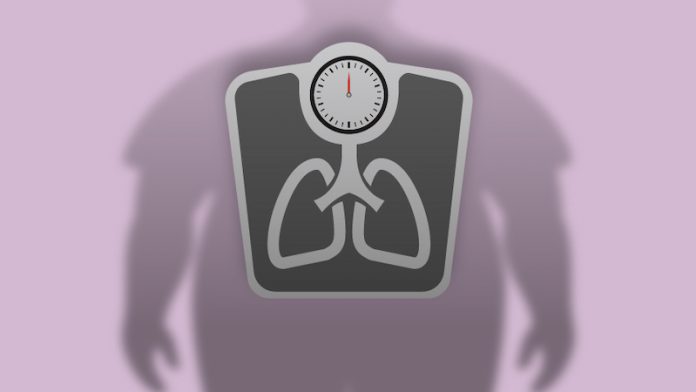
The reasons people who are obese often develop respiratory problems, from simple shortness of breath to a potentially life-threatening condition known as obesity hypoventilation syndrome (OHS), remains somewhat a mystery.
This puzzle led Michigan Medicine endocrinologists Eric Buras, M.D., Ph.D., and Tae-Hwa Chun, M.D., Ph.D., to assemble a team of researchers to examine obesity-associated respiratory dysfunction.
Their goal was to specifically test whether alterations in diaphragm structure, movement and strength occurred when these animals became obese.
The researchers placed mice on a high-fat diet in which 45% of their caloric intake came from fats, and serially measured diaphragm motion by ultrasound during a six-month period.
Their groundbreaking work was featured as the cover story in the January 2019 edition of Diabetes.
“After six months of feeding, we observed that diaphragm motion on ultrasound was significantly reduced in obese mice versus lean mice eating a normal diet,” says Buras, a clinical lecturer at U-M.
To take things a step further, the team wanted to determine whether or not this functional change was within the diaphragm itself, or simply a result of slowed movement due to pressure from excess chest and abdominal fat tissue.
So, the team removed strips of diaphragm muscle from the mice and analyzed their contraction.
In order to do this, they electrically stimulated strips in an ion-rich bath, and measured contractile force with a “force transducer,” or a mechanism that measures both tension and compression forces through electrical output.
“We were very pleasantly surprised to find lower contractile force in samples from the obese group,” says Buras.
“This reinforced the idea that the diaphragm muscle itself was compromised, rather than simply affected by increased fat tissue inhibiting motion. This was very fascinating.”
The team then focused on analyzing the anatomy of the diaphragm. Surprisingly, they observed no obvious differences in the appearance of muscle cells from high fat-fed mice.
They did, however, observe large inclusions of adipocytes, or fat cells, and an increase in fibrosis, or higher deposits of collagen than normal surrounding muscle cells.
The team noted that when other muscles show increased numbers of adipocytes and excessive collagen deposits, they tend to have difficulty contracting.
However, this is traditionally in the context of other disorders and not due to obesity, specifically.
Further, they focused on a specific cell type called the fibro-adipogenic progenitor (FAP) in order to identify the cellular source for these increased fat cells and collagens surrounding the diaphragm.
“Upon observation, we found that FAPs, which are stem cells within muscle, gave rise to all adipocytes and many collagen-producing cells in the obese diaphragm,” says Buras.
“Additionally, we saw that obesity activated these cells to rapidly increase in number, ultimately leading the diaphragm to become fatty and fibrotic.”
Buras and his team also found that thrombospondin-1, a protein that circulates in the blood and increases with obesity, can actually cause FAP proliferation, something that has never been discovered before.
Overall, the study established a new framework for understanding obesity-induced respiratory dysfunction.
It also highlighted the FAP as a potential target for improving diaphragm functionality in patients who are obese.
Chun even hopes to team up with other experts at U-M in pulmonology and sleep medicine to develop a translational clinic to improve the diagnosis and treatment of OHS, while using this work as a foundation.
“This study allowed us to better understand the impact obesity has on the most important muscle in the body, the diaphragm,” says Buras.
“And while our work was only on an animal model, it opens up a new way of thinking about obesity-associated respiratory dysfunction, which can one day be applicable to patients, and potentially life-changing.”
Written by Jina Sawani.



